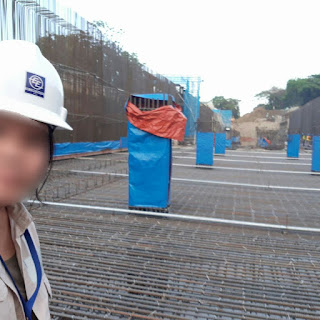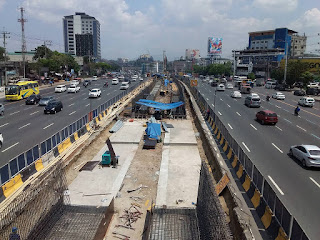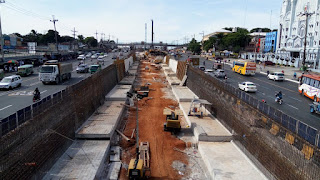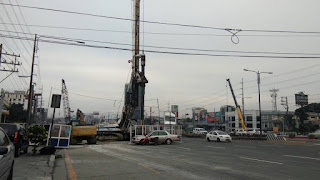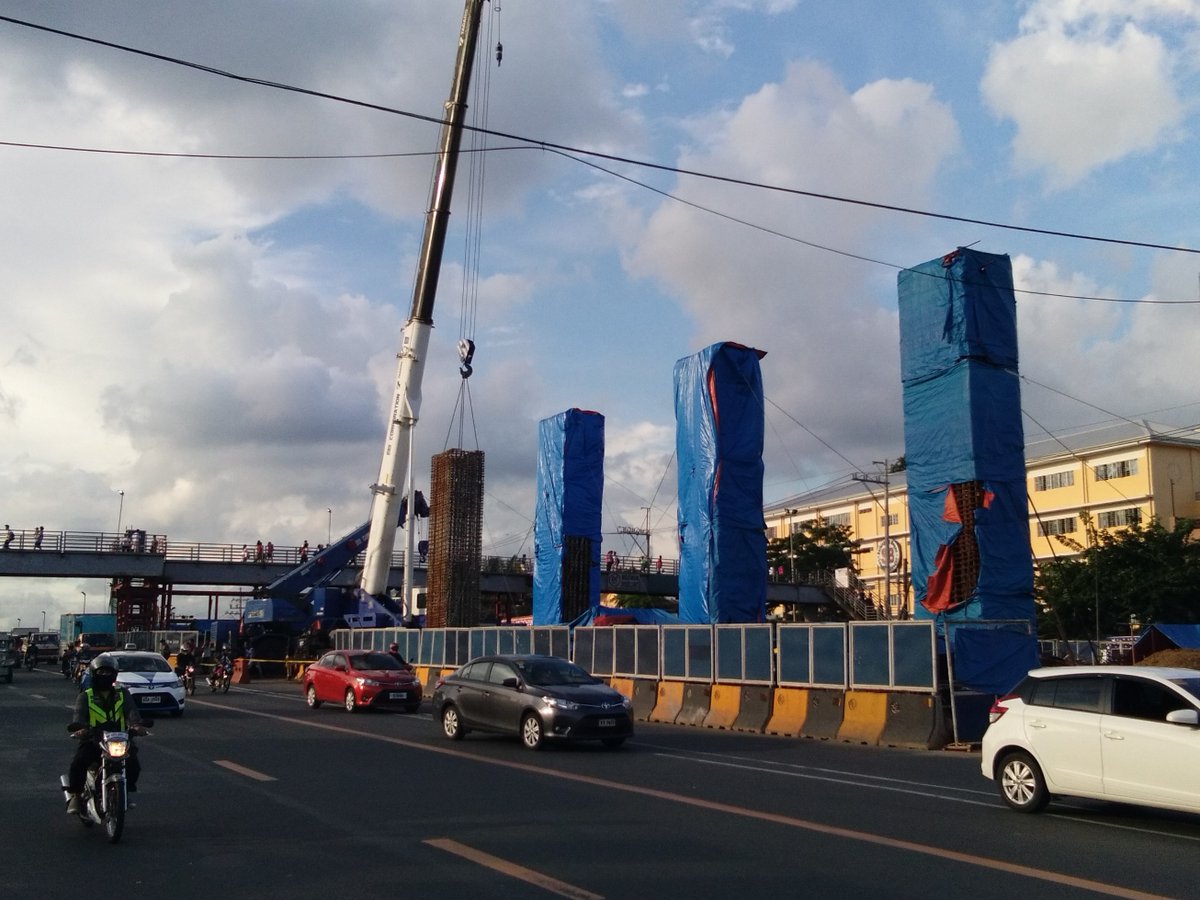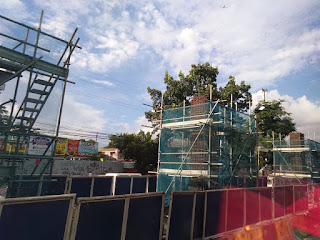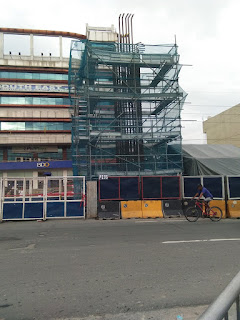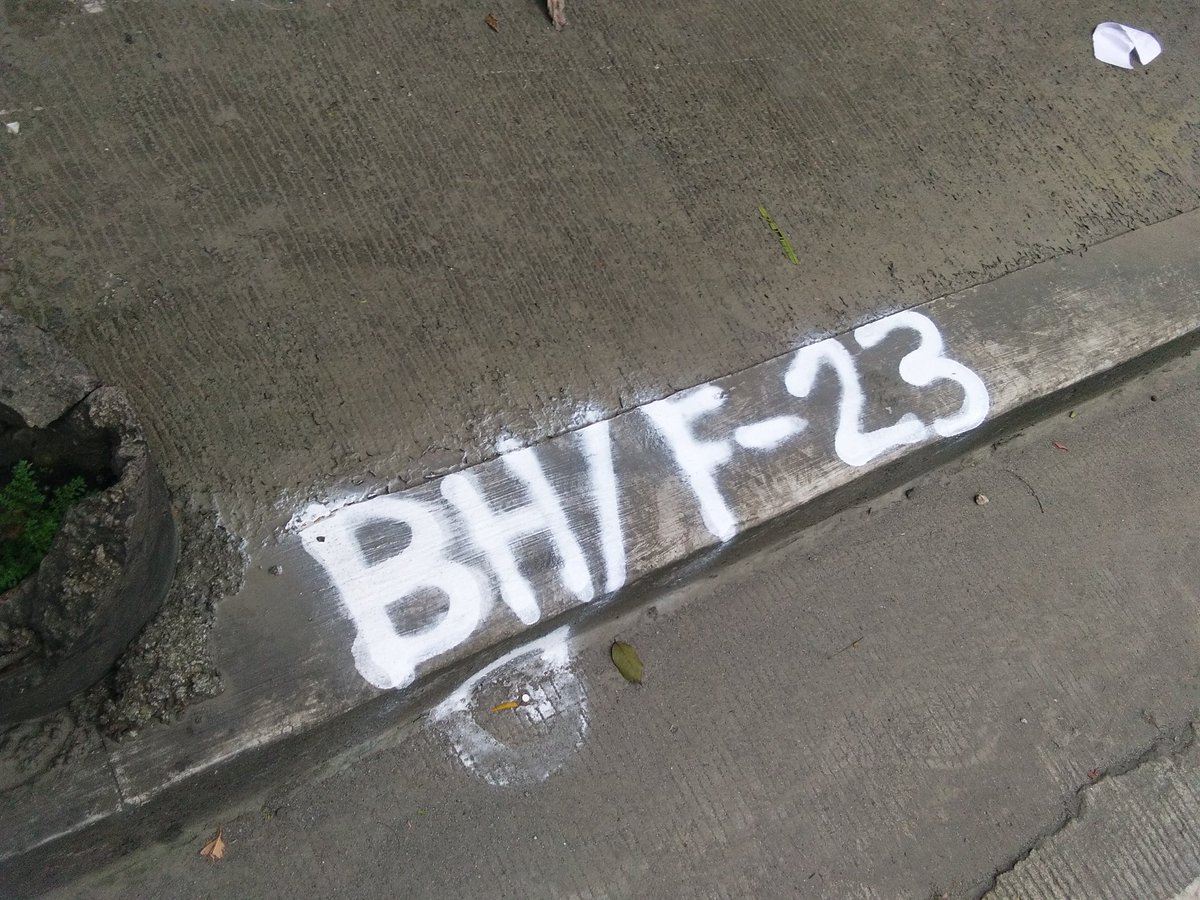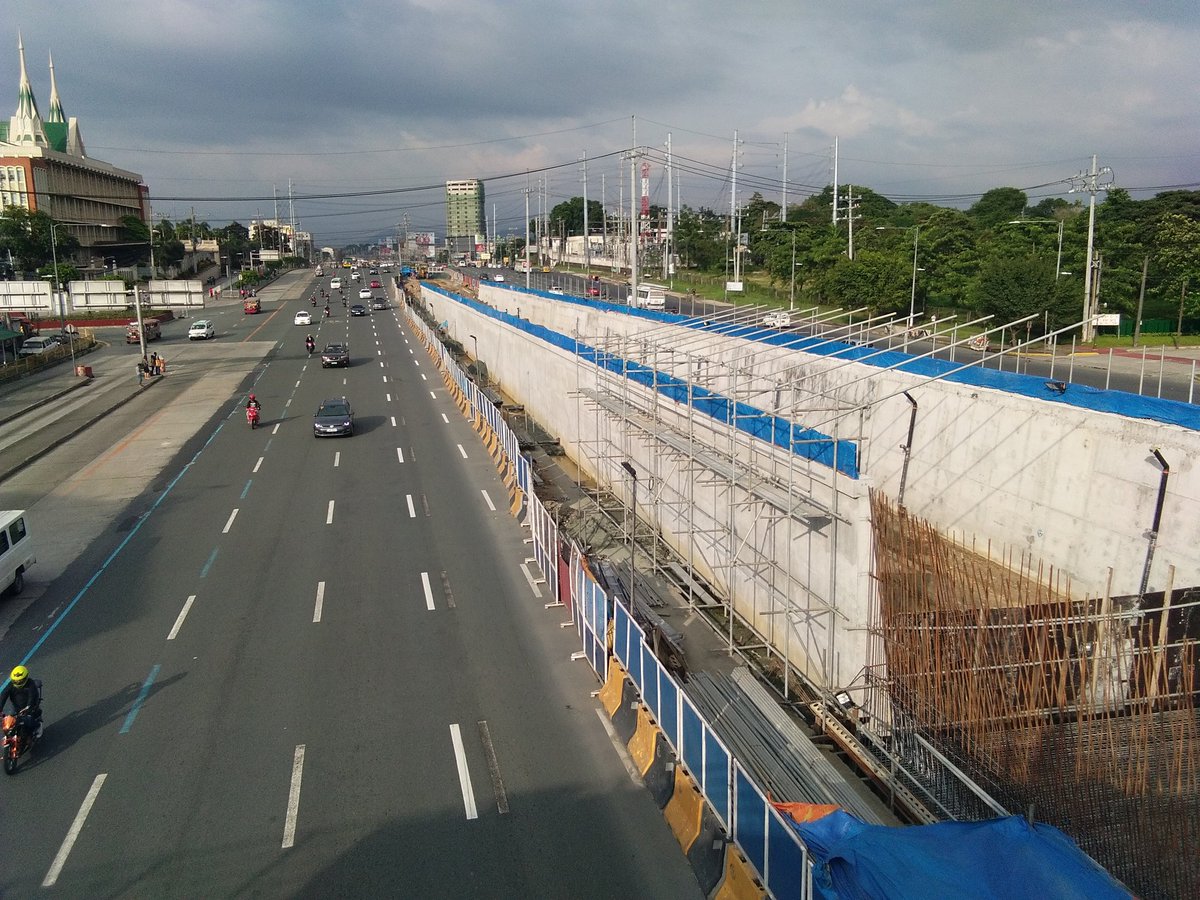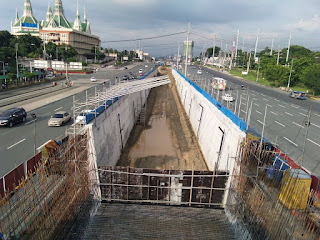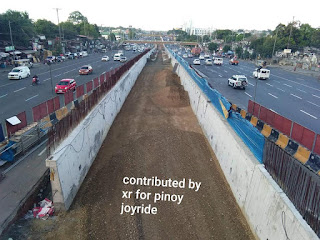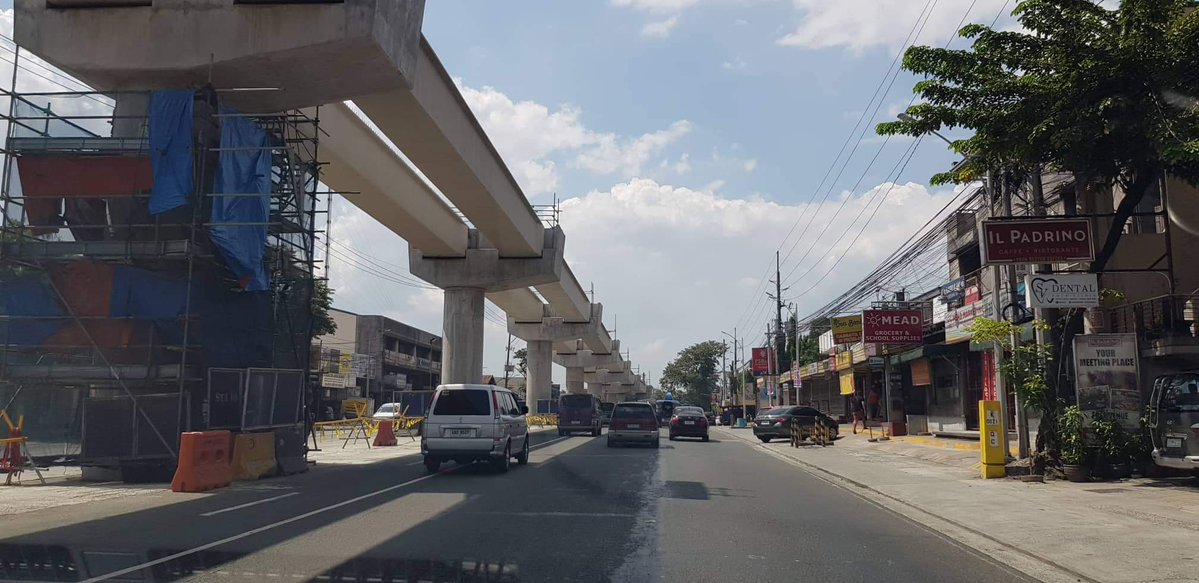Things seem to be looking up for the Department of Transportation as it continues to push the infrastructure agenda of the Duterte administration this 2019 and several more in the pipeline.
According to a yearend report by the DOTr, the number of completed airport projects alone, from 2016 to 2019, has reached a total of 119 projects—with 70 projects under the DOTr and 49 under the Civil Aviation Authority of the Philippines.
This does not include the 166 ongoing airport projects, with 138 projects directly under the DOTr and 28 under the CAAP.
Some of the completed projects this year include the Marinduque Airport, inaugurated on April 11, 2019, which resumed commercial operations in the same month nearly six years after its last commercial operations in 2013.
The Sangley Airport, seen as one of the solutions to decongest the Ninoy Aquino International Airport (NAIA), had its operational dry run on Oct. 29 with general aviation and turboprop cargo operations beginning November.
The Camiguin Airport has been completed and ready for inauguration, with its expanded passenger terminal building, administration building, and a fire station building.
For ongoing airport projects, the highlights include the Bulacan International Airport which had its notice of award issued to the San Miguel Holdings Corp. on Aug. 14 and concession agreement signed on Sept. 18.
The Clark International Airport is 87.61 percent complete as of October 2019, with a new runway to be completed in July 2020 and its operations and maintenance turned over to LIPAD Corporation on August 16.
Following efforts to increase the operational efficiency of airports and reduce day-time flight congestion, 23 out of 42 commercial airports have been night-rated, with another 15 targeted for night-rating in 2022.
The DOTr has also continued the construction of several railway infrastructure projects this year with even more to come.
A total of six railway projects are under construction, including the Metro Manila Subway—clearing phase of the construction began on December 21; the long-delayed Common Station which will connect the MRT-3, MRT-7, LRT-1 and the Metro Manila Subway; MRT-7 which is 49.95 percent complete as of November; the LRT-1 Cavite Extension, 30.74 percent complete as of October; the LRT-2 East Extension, 71.19 percent complete as of October 2019; and the Philippine National Railways (PNR) Clark Phase 1 (Tutuban to Malolos) which began its actual construction on Feb. 15.
The rehabilitation of the MRT-3 is also ongoing which includes the overhaul of the rail line’s 72 light rail vehicles, replacement of mainline tracks, rehabilitation of power and overhead catenary systems, and other improvements to help the MRT-3 cope with the demand for efficient public transportation in Metro Manila. PNA
Rail projects still in the pipeline include the PNR Clark Phase 2, PNR Calamba, PNR Bicol (Subic to Clark), Mindanao Railway, LRT-2 West Extension, LRT-4, and the Cebu Monorail.
For road transport, the country’s first landport, the Parañaque Integrated Terminal Exchange continues to serve the public, with two other landports in the pipeline.
These landports include the Taguig City Integrated Terminal Exchange and the North Integrated Terminal Exchange.
The DOTr, with the help of its attached agency the Philippine Ports Authority (PPA), has completed a total of 325 port projects from 2016 to 2019 -- 181 commercial port projects under the PPA and 144 social and tourism port projects under the DOTr.
Aside from the completed projects, another 246 port projects are ongoing -- 58 under the PPA and 188 from the DOTr.
Some of the completed port projects include the completion of the country’s largest port terminal building at the Cagayan de Oro (CDO) Port which can hold 3,000 passengers daily -- triple its previous capacity -- and the port’s new electronic gate complex with weighbridge inaugurated on July 15.
The Cavite-Manila ferry service was also launched in November, with the MB Seaborne offering free rides until January 9, 2020 and the MV Island Sabtang until January 31, 2020.
The Opol Port, designed as a back-up port to help decongest the CDO port and caters mainly to cargo vessels, was inaugurated on July 15.
The Batangas Container Terminal Expansion Project, completed on April 29, is seen to improve the efficiency of the Port of Batangas by increasing the handling capacity of the port from 300,000 TEUs to 400,000 TEUs annually.
Ongoing projects include the Isabela Port in Basilan, 30.99 percent complete as of October; the Cebu International Container Port, which, once completed, would handle all foreign containerized cargo completing the Cebu Baseport; the PAGASA Seaport Project Phase 1, 75 percent complete as of October 2019; the modernization of light station -- with 551 of 600 lighthouses operational as of November, among several others. PNA
https://manilastandard.net/news/national/313730/dotr-completes-several-infra-projects-for-2019.html
Tuesday, December 31, 2019
Monday, December 30, 2019
Is it full steam ahead for the Philippine railway system?
The Philippines is undertaking a major railway expansion program to improve connectivity and mobility and alleviate traffic congestion on roads. But it appears that rail works have not been moving at full steam as the government has planned, resulting in project delays.
A comparison made by The STAR between the initial targets and actual achievements showed that almost all railway projects are behind schedule.
The Metro Rail Transit Line 7 (MRT-7) project, which began civil works in August 2016, should have been completed by this time based on the Department of Transportation (DOTr)’s target in its first year performance report covering the July 2016 to July 2017 period.
By end-2017, however, the DOTr adjusted the MRT-7 project’s completion target and is now “expected to be completed and operational by 2020.”
The latest update from the DOTr, however, show that the P75-billion rail project is expected to be ready for operation by the second quarter of 2021.
But what will be completed by then is only a partial operability section running from North EDSA common station to Fairview. Full completion has been pushed back to 2022, three years late from the DOTr’s initial target.
The MRT-7, a public private partnership project being undertaken by conglomerate San Miguel Corp., is a 22-kilometer railway system that will connect Quezon City to San Jose Del Monte, Bulacan.
Once operational, the MRT-7 is expected to ferry between 300,000 and 800,000 passengers per day, with room for capacity expansion to accommodate future increases in ridership.
Aside from the MRT-7, two Light Rail Transit (LRT) lines extension projects are also behind schedule.
The P65.1 billion LRT-1 Cavite Extension was originally slated for completion by October 2021 following the groundbreaking ceremony on May 4, 2017.
Actual civil works of the 11.7-kilometer extension, however, started only last May, with the partial operability of a section from Baclaran to Dr. Santos in Parañaque expected to be completed by December 2021, and full operations by the third quarter of 2023.
The extended system can accommodate up to 800,000 passengers per day, and will reduce travel time from Baclaran to Bacoor, Cavite from one to two hours to only 25 minutes.
The LRT-2 East Extension, for its part, was supposed to be completed by August 2018 based on DOTr’s initial target.
The P9.7 billion project, which involves the construction of a 3.9-km extension of the existing LRT-2 system from Santolan in Pasig City to Masinag in Antipolo, is now expected to be finished by December next year.
When the project is completed, it will reduce travel time from Masinag to Claro M. Recto from three hours to only 40 minutes.
A Philippine National Railways (PNR) line to the north – from Manila to Clark – was also earlier envisioned to be in place by next year, but that won’t be the case.
“By 2020, this would be the reality,” the DOTr said in its 2017 report, referring to what was then called the PNR North, a project involving a 38-km Phase 1 segment spanning from Tutuban to Malolos in Bulacan, and a Phase 2 stretch from Malolos to Clark in Pampanga.
The Tutuban to Malolos portion, now dubbed as the PNR Clark 1 or the North-South Commuter Railway, started civil works in February, and is eyed for partial operations by the fourth quarter of 2021.
PNR Clark 2, which is composed of a 53-km extension to Clark in Pampanga, is expected to begin civil works by the second quarter of next year, with a partial operability target of 2022.
Meanwhile, three highly anticipated big-ticket rail projects which are supposed to have started construction by this time have also faced delays.
Based on the DOTr’s 2017 annual report, the P357-billion Metro Manila subway project was seen beginning construction by the fourth quarter of 2018, and was due for partial operability by the second quarter of 2022.
Construction works for the country’s first subway system, however, will only start this month, but the DOTr is looking at completing its partial operability portion at a much earlier date, which is by the fourth quarter 2021. Full operations of the system is eyed by November 2025.
The P175-billion PNR Bicol, also known as the PNR South Long Haul Project, was also supposed to start construction by the third quarter of 2018, but is now targeted to commence civil works by the second or third quarter next year.
The 639-kilometer long-haul rail line, which will cut travel time from Manila to Bicol from 12 hours by car to under six hours, is set for partial operability by December 2021 and full operations by 2025.
In addition, construction of the initial segment of the country’s first train system outside Luzon, the Mindanao Railway Project, was originally targeted to begin in the third quarter of last year and expected to be finished by the second quarter of 2021.
Target start of civil works is expected to start by the first quarter of next year. Completion of the partial operability section from Tagum to Davao is expected to happen by the second quarter of 2022, with full operations of the entire first phase alignment by the fourth quarter of 2022.
The P82-billion Phase 1 of the Mindanao Railway Project, or the Tagum-Davao-Digos segment, will have eight stations located in Tagum, Carmen, Panabo, Mudiang, Davao, Toril, Sta. Cruz, and Digos. It will cut travel time from Tagum City in Davao del Norte to Digos City in Davao del Sur from 3.5 hours to 1.3 hours.
For Transportation Undersecretary for rails Timothy John Batan, there is an array of factors affecting the schedule and timeline of implementing rail projects in the country, among which are investment decision and financing.
“The usual part of the process is, of course, first to get the NEDA board approval because that’s the investment decision. You cannot do anything if you don’t have that investment decision and it is just right that it undergoes that process. Imagine we’re investing a lot of taxpayers’ money and a lot of government resources so it is right to undergo such process,” he said.
“Number two is financing. You cannot build anything if you don’t have the money. Our lenders won’t simply provide the funds without undergoing the process,” Batan said.
Except for the MRT-7 and the upcoming LRT-2 West Extension project which will extend the existing Line 2 system by 3.02 kms from Recto Station to Pier 4, the rest of the country’s railway projects are being funded by an official development assistance (ODA) from either Japan or China.
The North-South Commuter Railway Project, LRT-2 East Extension, Metro Manila Subway, LRT-1 Cavite Extension (for its light rail vehicles and depot), and the ongoing maintenance and rehabilitation of the MRT-3 are financed by Japan ODA.
PNR Bicol, Mindanao Railway, and a planned Subic-Clark Railway, meanwhile, are funded by China ODA.
China ODAs are different from Japan as far as the process goes. For Japan ODA, loan comes first then project contract agreement, while for China, project contract agreement comes first and then loan agreement follows.
“People don’t see it, but our development lenders, you will not simply go to them, knock on their doors and then they will give you money. It doesn’t work that way. They have to be confident and we have to get their trust and confidence that we will use the funds right,” Batan said.
“We’re borrowing hundreds of billions of pesos from them and we need it. So it is just right for them to look for good governance, that there’s no corruption, and that the procurements are going to happen,” he said.
Batan said other factors that could derail a project’s schedule are right of way, procurement and detailed engineering design, which takes 12 to 24 months to complete.
Batan admits the right-of-way delivery remains very challenging for the government at present.
“It is still hard. But we’ve seen a big improvement and much of that is thanks to Congress because of the new Right-of-Way Law in 2016 that allows us to give current market value offer so the owners are much more receptive,” he said.
Despite the challenges, the DOTr, under the leadership of Secretary Arthur Tugade, nonetheless managed to make significant strides to achieve the government’s grand railway vision for the country.
The DOTr has settled the dispute on the location of the unified grand central station, with the construction of the common station that will connect four major rail lines (LRT-1, MRT-3, MRT-7, and the Metro Manila Subway) finally starting in May.
Issues on the China-made Dalian train sets procured by the previous administration have also been resolved, with the manufacturer agreeing to shoulder the cost of the technical adjustments as the government aims to integrate the trains into the MRT-3 operations.
The DOTr has also vowed to fix and restore the MRT-3 to its original and high-grade design state by the third quarter of 2021 after re-engaging the services of Sumitomo-Mitsubishi Heavy Industries for the train system’s rehabilitation and maintenance.
All these constructions, improvements and initiatives are aimed at solving the issues such as lack of coaches, numerous breakdowns, and daily passenger overflow that have plagued the nation’s railway systems.
The end goal, according to Tugade, is to give the public affordable and efficient services.
“When we assumed, the total kilometers of the railway stations in the Republic of the country is barely 77 kilometers. While other countries in this domain have increased and improved on their population of railways, ours have decreased. Therefore, right now, what we are trying to do is to achieve a working ideal number of kilometers so that we can achieve the objective of President Duterte to give the Filipinos a comfortable life,” Tugade said.
From a total of 77 kms of operational railways, the DOTr intends to further expand the current length to a total of 1,900 kms by 2022.
The country’s 2016 rolling stock fleet of 221 operational train cars, also known as light rail vehicles or coaches, is also eyed to grow to more than 1,200 by the end of the Duterte administration.
“What we are doing in rail is we are trying to expand not only the coverage but more importantly we are trying to improve the equipment and the facilities needed to make a smooth mobility and connectivity among its people,” Tugade said.
https://www.philstar.com/business/2019/12/30/1980630/it-full-steam-ahead-philippine-railway-system
A comparison made by The STAR between the initial targets and actual achievements showed that almost all railway projects are behind schedule.
The Metro Rail Transit Line 7 (MRT-7) project, which began civil works in August 2016, should have been completed by this time based on the Department of Transportation (DOTr)’s target in its first year performance report covering the July 2016 to July 2017 period.
By end-2017, however, the DOTr adjusted the MRT-7 project’s completion target and is now “expected to be completed and operational by 2020.”
The latest update from the DOTr, however, show that the P75-billion rail project is expected to be ready for operation by the second quarter of 2021.
But what will be completed by then is only a partial operability section running from North EDSA common station to Fairview. Full completion has been pushed back to 2022, three years late from the DOTr’s initial target.
The MRT-7, a public private partnership project being undertaken by conglomerate San Miguel Corp., is a 22-kilometer railway system that will connect Quezon City to San Jose Del Monte, Bulacan.
Once operational, the MRT-7 is expected to ferry between 300,000 and 800,000 passengers per day, with room for capacity expansion to accommodate future increases in ridership.
Aside from the MRT-7, two Light Rail Transit (LRT) lines extension projects are also behind schedule.
The P65.1 billion LRT-1 Cavite Extension was originally slated for completion by October 2021 following the groundbreaking ceremony on May 4, 2017.
Actual civil works of the 11.7-kilometer extension, however, started only last May, with the partial operability of a section from Baclaran to Dr. Santos in Parañaque expected to be completed by December 2021, and full operations by the third quarter of 2023.
The extended system can accommodate up to 800,000 passengers per day, and will reduce travel time from Baclaran to Bacoor, Cavite from one to two hours to only 25 minutes.
The LRT-2 East Extension, for its part, was supposed to be completed by August 2018 based on DOTr’s initial target.
The P9.7 billion project, which involves the construction of a 3.9-km extension of the existing LRT-2 system from Santolan in Pasig City to Masinag in Antipolo, is now expected to be finished by December next year.
When the project is completed, it will reduce travel time from Masinag to Claro M. Recto from three hours to only 40 minutes.
A Philippine National Railways (PNR) line to the north – from Manila to Clark – was also earlier envisioned to be in place by next year, but that won’t be the case.
“By 2020, this would be the reality,” the DOTr said in its 2017 report, referring to what was then called the PNR North, a project involving a 38-km Phase 1 segment spanning from Tutuban to Malolos in Bulacan, and a Phase 2 stretch from Malolos to Clark in Pampanga.
The Tutuban to Malolos portion, now dubbed as the PNR Clark 1 or the North-South Commuter Railway, started civil works in February, and is eyed for partial operations by the fourth quarter of 2021.
PNR Clark 2, which is composed of a 53-km extension to Clark in Pampanga, is expected to begin civil works by the second quarter of next year, with a partial operability target of 2022.
Meanwhile, three highly anticipated big-ticket rail projects which are supposed to have started construction by this time have also faced delays.
Based on the DOTr’s 2017 annual report, the P357-billion Metro Manila subway project was seen beginning construction by the fourth quarter of 2018, and was due for partial operability by the second quarter of 2022.
Construction works for the country’s first subway system, however, will only start this month, but the DOTr is looking at completing its partial operability portion at a much earlier date, which is by the fourth quarter 2021. Full operations of the system is eyed by November 2025.
The P175-billion PNR Bicol, also known as the PNR South Long Haul Project, was also supposed to start construction by the third quarter of 2018, but is now targeted to commence civil works by the second or third quarter next year.
The 639-kilometer long-haul rail line, which will cut travel time from Manila to Bicol from 12 hours by car to under six hours, is set for partial operability by December 2021 and full operations by 2025.
In addition, construction of the initial segment of the country’s first train system outside Luzon, the Mindanao Railway Project, was originally targeted to begin in the third quarter of last year and expected to be finished by the second quarter of 2021.
Target start of civil works is expected to start by the first quarter of next year. Completion of the partial operability section from Tagum to Davao is expected to happen by the second quarter of 2022, with full operations of the entire first phase alignment by the fourth quarter of 2022.
The P82-billion Phase 1 of the Mindanao Railway Project, or the Tagum-Davao-Digos segment, will have eight stations located in Tagum, Carmen, Panabo, Mudiang, Davao, Toril, Sta. Cruz, and Digos. It will cut travel time from Tagum City in Davao del Norte to Digos City in Davao del Sur from 3.5 hours to 1.3 hours.
For Transportation Undersecretary for rails Timothy John Batan, there is an array of factors affecting the schedule and timeline of implementing rail projects in the country, among which are investment decision and financing.
“The usual part of the process is, of course, first to get the NEDA board approval because that’s the investment decision. You cannot do anything if you don’t have that investment decision and it is just right that it undergoes that process. Imagine we’re investing a lot of taxpayers’ money and a lot of government resources so it is right to undergo such process,” he said.
“Number two is financing. You cannot build anything if you don’t have the money. Our lenders won’t simply provide the funds without undergoing the process,” Batan said.
Except for the MRT-7 and the upcoming LRT-2 West Extension project which will extend the existing Line 2 system by 3.02 kms from Recto Station to Pier 4, the rest of the country’s railway projects are being funded by an official development assistance (ODA) from either Japan or China.
The North-South Commuter Railway Project, LRT-2 East Extension, Metro Manila Subway, LRT-1 Cavite Extension (for its light rail vehicles and depot), and the ongoing maintenance and rehabilitation of the MRT-3 are financed by Japan ODA.
PNR Bicol, Mindanao Railway, and a planned Subic-Clark Railway, meanwhile, are funded by China ODA.
China ODAs are different from Japan as far as the process goes. For Japan ODA, loan comes first then project contract agreement, while for China, project contract agreement comes first and then loan agreement follows.
“People don’t see it, but our development lenders, you will not simply go to them, knock on their doors and then they will give you money. It doesn’t work that way. They have to be confident and we have to get their trust and confidence that we will use the funds right,” Batan said.
“We’re borrowing hundreds of billions of pesos from them and we need it. So it is just right for them to look for good governance, that there’s no corruption, and that the procurements are going to happen,” he said.
Batan said other factors that could derail a project’s schedule are right of way, procurement and detailed engineering design, which takes 12 to 24 months to complete.
Batan admits the right-of-way delivery remains very challenging for the government at present.
“It is still hard. But we’ve seen a big improvement and much of that is thanks to Congress because of the new Right-of-Way Law in 2016 that allows us to give current market value offer so the owners are much more receptive,” he said.
Despite the challenges, the DOTr, under the leadership of Secretary Arthur Tugade, nonetheless managed to make significant strides to achieve the government’s grand railway vision for the country.
The DOTr has settled the dispute on the location of the unified grand central station, with the construction of the common station that will connect four major rail lines (LRT-1, MRT-3, MRT-7, and the Metro Manila Subway) finally starting in May.
Issues on the China-made Dalian train sets procured by the previous administration have also been resolved, with the manufacturer agreeing to shoulder the cost of the technical adjustments as the government aims to integrate the trains into the MRT-3 operations.
The DOTr has also vowed to fix and restore the MRT-3 to its original and high-grade design state by the third quarter of 2021 after re-engaging the services of Sumitomo-Mitsubishi Heavy Industries for the train system’s rehabilitation and maintenance.
All these constructions, improvements and initiatives are aimed at solving the issues such as lack of coaches, numerous breakdowns, and daily passenger overflow that have plagued the nation’s railway systems.
The end goal, according to Tugade, is to give the public affordable and efficient services.
“When we assumed, the total kilometers of the railway stations in the Republic of the country is barely 77 kilometers. While other countries in this domain have increased and improved on their population of railways, ours have decreased. Therefore, right now, what we are trying to do is to achieve a working ideal number of kilometers so that we can achieve the objective of President Duterte to give the Filipinos a comfortable life,” Tugade said.
From a total of 77 kms of operational railways, the DOTr intends to further expand the current length to a total of 1,900 kms by 2022.
The country’s 2016 rolling stock fleet of 221 operational train cars, also known as light rail vehicles or coaches, is also eyed to grow to more than 1,200 by the end of the Duterte administration.
“What we are doing in rail is we are trying to expand not only the coverage but more importantly we are trying to improve the equipment and the facilities needed to make a smooth mobility and connectivity among its people,” Tugade said.
https://www.philstar.com/business/2019/12/30/1980630/it-full-steam-ahead-philippine-railway-system
Thursday, December 26, 2019
DPWH starts review of new expressway to Anda Circle
The Public Works Department said it began reviewing the proposal of NLEX Corp. to build a 5.1-kilometer elevated expressway from Navotas to Anda Circle in Port Area, Manila.
“We started reviewing it, but we’re still waiting for the full-blown proposal. It might be in the form of unsolicited proposal it could be an extension of the concession agreement. That is why we are studying it,” Public Works Secretary Mark Villar said.
NLEX said the proposed project called Harbor Link Port Access Mobility Facility would cost between P15 billion and P16 billion.
NLEX is currently building the 2.6-km Harbor Link (R10 Section) which is expected to be completed by March next year.
It also started the construction of an 8-kilometer toll road linking the tail of NLEX Harbor Link Segment 10 in C3 Road, Caloocan City to PUP Sta. Mesa, Manila which would mostly traverse the Philippine National Railways track.
NLEX Corp., the operator of North Luzon Expressway and Subic-Clark-Tarlac Expressway, earlier reported a net income of P4.25 billion in the first nine months, up 25 percent from P3.4 billion in the same period last year.
The company attributed the increase in the net profit to higher toll revenues in both NLEX and SCTEX and more efficient utilization of resources covering toll operations and maintenance costs.
Toll revenues during the period reached P9.6 billion, up 14 percent from a year earlier amid the steady increase in traffic and steady growth in non-toll revenues.
The average daily traffic in NLEX reached 250,992 daily entries, or 7.6 percent higher than 233,332 daily entries recorded in the same period last year.
The average daily traffic at SCTEx also increased 14.3 percent to 61,071 daily entries from 53,407 last year.
NLEX currently spans 95 kilometers or 527-lane kilometers, serving an average of 237,046 vehicles a day in 2017. It is the main infrastructure backbone that connects Metro Manila to Central and Northern Luzon.
SCTEX is a 94-km, 2x2 expressway stretching from Subic-Tipo until La Paz, Tarlac, connecting the special economic zones in Subic and Clark, Olongapo City, to Tarlac City.
https://manilastandard.net/business/biz-plus/313385/dpwh-starts-review-of-new-expressway-to-anda-circle.html
“We started reviewing it, but we’re still waiting for the full-blown proposal. It might be in the form of unsolicited proposal it could be an extension of the concession agreement. That is why we are studying it,” Public Works Secretary Mark Villar said.
NLEX said the proposed project called Harbor Link Port Access Mobility Facility would cost between P15 billion and P16 billion.
NLEX is currently building the 2.6-km Harbor Link (R10 Section) which is expected to be completed by March next year.
It also started the construction of an 8-kilometer toll road linking the tail of NLEX Harbor Link Segment 10 in C3 Road, Caloocan City to PUP Sta. Mesa, Manila which would mostly traverse the Philippine National Railways track.
NLEX Corp., the operator of North Luzon Expressway and Subic-Clark-Tarlac Expressway, earlier reported a net income of P4.25 billion in the first nine months, up 25 percent from P3.4 billion in the same period last year.
The company attributed the increase in the net profit to higher toll revenues in both NLEX and SCTEX and more efficient utilization of resources covering toll operations and maintenance costs.
Toll revenues during the period reached P9.6 billion, up 14 percent from a year earlier amid the steady increase in traffic and steady growth in non-toll revenues.
The average daily traffic in NLEX reached 250,992 daily entries, or 7.6 percent higher than 233,332 daily entries recorded in the same period last year.
The average daily traffic at SCTEx also increased 14.3 percent to 61,071 daily entries from 53,407 last year.
NLEX currently spans 95 kilometers or 527-lane kilometers, serving an average of 237,046 vehicles a day in 2017. It is the main infrastructure backbone that connects Metro Manila to Central and Northern Luzon.
SCTEX is a 94-km, 2x2 expressway stretching from Subic-Tipo until La Paz, Tarlac, connecting the special economic zones in Subic and Clark, Olongapo City, to Tarlac City.
https://manilastandard.net/business/biz-plus/313385/dpwh-starts-review-of-new-expressway-to-anda-circle.html
Train set for LRT-1 Cavite extension to arrive next July
THE government expects the first train set for the P64.9-billion Cavite extension of the Light Rail Transit Line 1 to arrive from Spain by July.
The train set, equivalent to four light rail vehicles of the LRT-1, will be delivered by Mitsubishi Corp. and its technical partner Construcciones y Auxiliar de Ferrocarriles, Transportation Assistant Secretary Goddes Hope Oliveros-Libiran said in a mobile-phone message last week.
She added that 91% of the right of way for the first phase of the extension project had been acquired.
The LRT-1 Cavite Extension project is a public-private partnership (PPP) venture that the National Economic and Development Authority board first approved in November 2013.
It will add an 11.7-kilometer segment from Baclaran, Pasay City to Bacoor, Cavite to the existing 18.1-kilometer train line. The new stretch will have eight stations.
The government of former President Benigno Simeon C. Aquino III awarded Light Rail Manila Corp. the P65-billion public-private partnership (PPP) project in September 2014. The company was allowed to take over the operations and maintenance of the LRT-1 system in September 2015.
The first phase of the extension consists of a seven-kilometer stretch with five stations between Redemptorist Church in Baclaran and Dr. Santos Avenue in Parañaque City.
Ms. Libiran said the first phase will start operating by the fourth quarter of 2021. The remaining stations between Las Piñas and Niog in Bacoor, Cavite will be completed a year later.
The Transportation department expects travel time from Baclaran to Bacoor to be cut to 25 minutes from up to two hours now once LRT-1’s Cavite extension opens to the public. The train line’s daily ridership is expected to increase to 800,000 passengers from 500,000.
Light Rail Manila, which operates the LRT-1, is a joint venture of Ayala Corp., Metro Pacific Light Rail Corp. and Macquarie Infrastructure Holdings (Philippines) Pte. Ltd.
The company holds a 32-year PPP contract to operate LRT-1 and build its extension to Cavite.
Metro Pacific Investments Corp. is one of three Philippine subsidiaries of Hong Kong’s First Pacific Co. Ltd., the others being PLDT, Inc. and Philex Mining Corp. Hastings Holdings, Inc., a unit of PLDT Beneficial Trust Fund subsidiary MediaQuest Holdings, Inc., maintains an interest in BusinessWorld through the Philippine Star Group, which it controls. — Arjay L. Balinbin
https://www.bworldonline.com/train-set-for-lrt-1-cavite-extension-to-arrive-next-july/
The train set, equivalent to four light rail vehicles of the LRT-1, will be delivered by Mitsubishi Corp. and its technical partner Construcciones y Auxiliar de Ferrocarriles, Transportation Assistant Secretary Goddes Hope Oliveros-Libiran said in a mobile-phone message last week.
She added that 91% of the right of way for the first phase of the extension project had been acquired.
The LRT-1 Cavite Extension project is a public-private partnership (PPP) venture that the National Economic and Development Authority board first approved in November 2013.
It will add an 11.7-kilometer segment from Baclaran, Pasay City to Bacoor, Cavite to the existing 18.1-kilometer train line. The new stretch will have eight stations.
The government of former President Benigno Simeon C. Aquino III awarded Light Rail Manila Corp. the P65-billion public-private partnership (PPP) project in September 2014. The company was allowed to take over the operations and maintenance of the LRT-1 system in September 2015.
The first phase of the extension consists of a seven-kilometer stretch with five stations between Redemptorist Church in Baclaran and Dr. Santos Avenue in Parañaque City.
Ms. Libiran said the first phase will start operating by the fourth quarter of 2021. The remaining stations between Las Piñas and Niog in Bacoor, Cavite will be completed a year later.
The Transportation department expects travel time from Baclaran to Bacoor to be cut to 25 minutes from up to two hours now once LRT-1’s Cavite extension opens to the public. The train line’s daily ridership is expected to increase to 800,000 passengers from 500,000.
Light Rail Manila, which operates the LRT-1, is a joint venture of Ayala Corp., Metro Pacific Light Rail Corp. and Macquarie Infrastructure Holdings (Philippines) Pte. Ltd.
The company holds a 32-year PPP contract to operate LRT-1 and build its extension to Cavite.
Metro Pacific Investments Corp. is one of three Philippine subsidiaries of Hong Kong’s First Pacific Co. Ltd., the others being PLDT, Inc. and Philex Mining Corp. Hastings Holdings, Inc., a unit of PLDT Beneficial Trust Fund subsidiary MediaQuest Holdings, Inc., maintains an interest in BusinessWorld through the Philippine Star Group, which it controls. — Arjay L. Balinbin
https://www.bworldonline.com/train-set-for-lrt-1-cavite-extension-to-arrive-next-july/
Wednesday, December 25, 2019
Sunday, December 22, 2019
LRT 1 draws up temporary traffic scheme
The Light Rail Manila Corporation said a new temporary passenger traffic scheme will be implemented in LRT-1 north line composed of Monumento, Balintawak, and Roosevelt stations, effective January 4, 2020 to March 31, 2020. This is to accommodate the construction of the Common Station also known as the Unified Grand Central Station (UGCS) which will connect the systems of LRT-1, MRT-3 and MRT-7.
Under the temporary passenger traffic scheme, commuters traveling northbound may take the Baclaran-to-Monumento circuit and the Baclaran-to-Balintawak circuit, LRMC said in a statement.
Passengers with Roosevelt station as their last stop are advised to take the Baclaran-to-Balintawak circuit. A special shuttle train will arrive every ten minutes during weekday peak period to exclusively pick up passengers in Balintawak station and shuttle them to Roosevelt station. The same shuttle train will pick-up passengers from Roosevelt station and bring them to Balintawak station where LRT-1 commuters can take the train going southbound.
LRMC Chief Operating Officer Enrico Benipayo said the Baclaran-to-Monumento circuit will address the heavy passenger volume in Monumento station especially during peak hours. “We want to ensure normal operations in all twenty stations of our existing line while the construction of the common station is ongoing that’s why we have this temporary passenger traffic scheme.”
LRMC will deploy additional crowd marshals and safety teams as well as put up directional signages in the stations. “We will also add signage inside the trains for passengers to easily identify if the last stop of the train is either Monumento or Balintawak,” added Benipayo.
The Common Station is one of the big-ticket projects of the Department of Transportation (DOTr) to enable passengers to seamlessly transfer from one rail line to another.
https://manilastandard.net/mobile/article/313089
Under the temporary passenger traffic scheme, commuters traveling northbound may take the Baclaran-to-Monumento circuit and the Baclaran-to-Balintawak circuit, LRMC said in a statement.
Passengers with Roosevelt station as their last stop are advised to take the Baclaran-to-Balintawak circuit. A special shuttle train will arrive every ten minutes during weekday peak period to exclusively pick up passengers in Balintawak station and shuttle them to Roosevelt station. The same shuttle train will pick-up passengers from Roosevelt station and bring them to Balintawak station where LRT-1 commuters can take the train going southbound.
LRMC Chief Operating Officer Enrico Benipayo said the Baclaran-to-Monumento circuit will address the heavy passenger volume in Monumento station especially during peak hours. “We want to ensure normal operations in all twenty stations of our existing line while the construction of the common station is ongoing that’s why we have this temporary passenger traffic scheme.”
LRMC will deploy additional crowd marshals and safety teams as well as put up directional signages in the stations. “We will also add signage inside the trains for passengers to easily identify if the last stop of the train is either Monumento or Balintawak,” added Benipayo.
The Common Station is one of the big-ticket projects of the Department of Transportation (DOTr) to enable passengers to seamlessly transfer from one rail line to another.
https://manilastandard.net/mobile/article/313089
LRMC lauded for progress in LRT works
Light Rail Manila Corp. (LRMC), the private operator of LRT-1, has received a commendation from the Department of Transportation (DOTr) for the progress of the ongoing construction of the LRT-1 Cavite Extension.
Since the start of civil works last Sept. 1, the pre-cast yard and staging area have been completed.
“I’m really very happy that I saw excavations and vertical pillars. I will say I'm very impressed with what I saw. The construction is moving so fast that it is unbelievable," Transportation Secretary Arthur Tugade said.
LRMC said six piers and five portals have also been built from the pre-cast yard toward the area of Dr. Santos station.
Preparations of the bored piling works along Ninoy Aquino Avenue is on-going and construction of MIA station will commence in 2020.
LRMC is working closely with DOTr and Light Rail Transit Authority for the Cavite Extension project under the Build Build Build program.
“We thank the good Secretary Tugade and our partner government and private agencies for their support to make the LRT-1 Cavite Extension project happen. The construction has really started and we're excited for our Filipino passengers to finally experience a comfortable, safe and efficient mode of transportation that they deserve,” LRMC president and CEO Juan Alfonso said.
The 11.7-kilometer project aims to cut travel time between Baclaran and Bacoor from one hour and 10 minutes to just 25 minutes.
From Baclaran, eight more stations – Redemptorist, MIA, Asiaworld, Ninoy Aquino, Dr. Santos, Las Piñas, Zapote and Niog – will be added which will increase the total number of LRT-1 stations from 20 to 28.
Once fully operational, the entire line of LRT-1 is expected to accommodate 800,000 passengers daily, nearly double its current average ridership of 480,000 to 500,000 passengers daily.
https://www.philstar.com/business/2019/12/22/1978826/lrmc-lauded-progress-lrt-works
Since the start of civil works last Sept. 1, the pre-cast yard and staging area have been completed.
“I’m really very happy that I saw excavations and vertical pillars. I will say I'm very impressed with what I saw. The construction is moving so fast that it is unbelievable," Transportation Secretary Arthur Tugade said.
LRMC said six piers and five portals have also been built from the pre-cast yard toward the area of Dr. Santos station.
Preparations of the bored piling works along Ninoy Aquino Avenue is on-going and construction of MIA station will commence in 2020.
LRMC is working closely with DOTr and Light Rail Transit Authority for the Cavite Extension project under the Build Build Build program.
“We thank the good Secretary Tugade and our partner government and private agencies for their support to make the LRT-1 Cavite Extension project happen. The construction has really started and we're excited for our Filipino passengers to finally experience a comfortable, safe and efficient mode of transportation that they deserve,” LRMC president and CEO Juan Alfonso said.
The 11.7-kilometer project aims to cut travel time between Baclaran and Bacoor from one hour and 10 minutes to just 25 minutes.
From Baclaran, eight more stations – Redemptorist, MIA, Asiaworld, Ninoy Aquino, Dr. Santos, Las Piñas, Zapote and Niog – will be added which will increase the total number of LRT-1 stations from 20 to 28.
Once fully operational, the entire line of LRT-1 is expected to accommodate 800,000 passengers daily, nearly double its current average ridership of 480,000 to 500,000 passengers daily.
https://www.philstar.com/business/2019/12/22/1978826/lrmc-lauded-progress-lrt-works
Saturday, December 21, 2019
DOTr begins clearing 'partial operability' site for Metro Manila subway
The Department of Transportation (DOTr) on Saturday began clearing a site for the partial operability section of the Metro Manila Subway, even as officials distributed checks to land-owners affected by the railway project.
In a statement, the DOTr said the site clearing work made the country its first-ever subway or underground railway system a reality.
The partial operability section of the subway included the first stations in Valenzuela City and Quezon City, the line's depot in Valenzuela City, and buildings for the Philippine Railway Institute (PRI), the country's first-ever railway training center.
A ceremony to formalize the start of the subway's construction was held at the depot site in Barangay Ugong in Valenzuela City.
The depot site would also be where the subway's East Valenzuela Station would be located.
Dubbed as the “Project of the Century,” the underground rail line was expected to serve 370,000 passengers daily in its first year of full operations, and was targeted to be partially operable by 2021.
Once completed and fully operational, the Metro Manila Subway Project would have a total of 15 stations, including a terminal station at the Ninoy Aquino International Airport (NAIA) Terminal 3.
Part of the ceremony was the distribution of checks and the signing of deeds of absolute sale with project-affected landowners, as well as a testimonial video presentation of project-affected informal settler families who had been relocated to Valenzuela’s Disiplina Village, the DOTr noted.
The formal start of clearing operations at the subway's Valenzuela depot was part of the DOTr’s continuing efforts to "muster all factors needed in building the underground railway project and in dealing with right-of-way acquisition issues."
Transportation Secretary Arthur Tugade, who led the ceremony, noted the progress in the right-of-way acquisition both in terms of acquiring land from legal owners and relocation of informal settler families.
A total of 460 lots were required for the partial operability section of the subway, out of which 364 offers to buy have had been issued based on current market value appraised by the Landbank, according to the DOTr.
Owners of 285 lots out of the 364 lots that the government had already offered to buy, had accepted or were completing documentation requirements for selling their properties to the government for the project.
A batch of project-affected landowners were present during the ceremony and received their check payments.
Meanwhile, 178 out of 183 affected informal settler families had been resettled to a better and safer location in Disiplina Village in Barangay Bignay, Valenzuela City with the support of the Valenzuela City local government.
“This gathering today is the primodial trigger to be able to start the subway. That is why this gathering is important. Wala naman ‘hong proyektong mai-implement kung ‘yung babagtasin mo na daan ay hindi pa nasolusyunan," Tugade said.
"Ngayong araw na ‘hong ito ang signal na para bang sinasabi nating parating na ang subway,” he said.
Following the official transfer of the properties from the landowners to the DOTr, contractors then started the clearing and fencing of portions of the depot.
“With our funding in place, contractor signed-up, detailed designs completed, and right-of-way substantially acquired, and under the strong willed leadership of our leader, Secretary Arthur Tugade, partial operability of the Duterte Administration's flagship Metro Manila Subway Project is on track to delivering its promise of a more comfortable life to every Filipino,” said Transportation Undersecretary for Railways Timothy John Batan. — DVM, GMA News
https://www.gmanetwork.com/news/news/metro/719844/dotr-begins-clearing-partial-operability-site-for-metro-manila-subway/story/
In a statement, the DOTr said the site clearing work made the country its first-ever subway or underground railway system a reality.
The partial operability section of the subway included the first stations in Valenzuela City and Quezon City, the line's depot in Valenzuela City, and buildings for the Philippine Railway Institute (PRI), the country's first-ever railway training center.
A ceremony to formalize the start of the subway's construction was held at the depot site in Barangay Ugong in Valenzuela City.
The depot site would also be where the subway's East Valenzuela Station would be located.
Dubbed as the “Project of the Century,” the underground rail line was expected to serve 370,000 passengers daily in its first year of full operations, and was targeted to be partially operable by 2021.
Once completed and fully operational, the Metro Manila Subway Project would have a total of 15 stations, including a terminal station at the Ninoy Aquino International Airport (NAIA) Terminal 3.
Part of the ceremony was the distribution of checks and the signing of deeds of absolute sale with project-affected landowners, as well as a testimonial video presentation of project-affected informal settler families who had been relocated to Valenzuela’s Disiplina Village, the DOTr noted.
The formal start of clearing operations at the subway's Valenzuela depot was part of the DOTr’s continuing efforts to "muster all factors needed in building the underground railway project and in dealing with right-of-way acquisition issues."
Transportation Secretary Arthur Tugade, who led the ceremony, noted the progress in the right-of-way acquisition both in terms of acquiring land from legal owners and relocation of informal settler families.
A total of 460 lots were required for the partial operability section of the subway, out of which 364 offers to buy have had been issued based on current market value appraised by the Landbank, according to the DOTr.
Owners of 285 lots out of the 364 lots that the government had already offered to buy, had accepted or were completing documentation requirements for selling their properties to the government for the project.
A batch of project-affected landowners were present during the ceremony and received their check payments.
Meanwhile, 178 out of 183 affected informal settler families had been resettled to a better and safer location in Disiplina Village in Barangay Bignay, Valenzuela City with the support of the Valenzuela City local government.
“This gathering today is the primodial trigger to be able to start the subway. That is why this gathering is important. Wala naman ‘hong proyektong mai-implement kung ‘yung babagtasin mo na daan ay hindi pa nasolusyunan," Tugade said.
"Ngayong araw na ‘hong ito ang signal na para bang sinasabi nating parating na ang subway,” he said.
Following the official transfer of the properties from the landowners to the DOTr, contractors then started the clearing and fencing of portions of the depot.
“With our funding in place, contractor signed-up, detailed designs completed, and right-of-way substantially acquired, and under the strong willed leadership of our leader, Secretary Arthur Tugade, partial operability of the Duterte Administration's flagship Metro Manila Subway Project is on track to delivering its promise of a more comfortable life to every Filipino,” said Transportation Undersecretary for Railways Timothy John Batan. — DVM, GMA News
https://www.gmanetwork.com/news/news/metro/719844/dotr-begins-clearing-partial-operability-site-for-metro-manila-subway/story/
Friday, December 20, 2019
LRT 1 to implement temporary traffic scheme in 2020
The Light Rail Transit Line 1 (LRT 1) will implement a new temporary passenger traffic scheme at select stations for the first months of 2020.
This is to make way for the construction of the Unified Grand Central Station, which will connect the systems of LRT 1, Metro Rail Transit Line 3 (MRT 3) and MRT 7.
From Jan. 4 to March 31, 2020, northbound passengers will have to disembark at the Monumento and Balintawak Stations as the train will no longer reach Roosevelt Station.
Passengers with Roosevelt station as their stop may take the Baclaran-to-Balintawak circuit, where a special shuttle train will arrive every 10 minutes during peak hours to exclusively transport passengers to the Roosevelt Station.
The same shuttle will pick up passengers from the Roosevelt Station and bring them to the Balintawak Station.
Meanwhile, the Baclaran-to-Monumento circuit will help address the heavy passenger volume at the Monumento Station, especially during peak hours.
The LRMC will deploy additional crowd marshals and safety teams as well as put up directional signs in the stations to inform passengers of the new passenger traffic scheme.
LRMC chief operating officer Enrico Benipayo assures that other stations along the LRT 1 will not be affected by the construction of the common station.
“We want to ensure normal operations in all twenty stations of our existing line while the construction of the common station is ongoing that’s why we have this temporary passenger traffic scheme,” Benipayo said in a statement.
“We will also add signage inside the trains for passengers to easily identify if the last stop of the train is either Monumento or Balintawak,” he added.
The Department of Transportation (DOTr) aims to open the country’s largest railway station that will serve as a centralized hub for four railway lines, including the planned Metro Manila subway, by late 2020.
https://newsinfo.inquirer.net/1203910/lrt-1-to-implement-temporary-traffic-scheme-in-2020
This is to make way for the construction of the Unified Grand Central Station, which will connect the systems of LRT 1, Metro Rail Transit Line 3 (MRT 3) and MRT 7.
From Jan. 4 to March 31, 2020, northbound passengers will have to disembark at the Monumento and Balintawak Stations as the train will no longer reach Roosevelt Station.
Passengers with Roosevelt station as their stop may take the Baclaran-to-Balintawak circuit, where a special shuttle train will arrive every 10 minutes during peak hours to exclusively transport passengers to the Roosevelt Station.
The same shuttle will pick up passengers from the Roosevelt Station and bring them to the Balintawak Station.
Meanwhile, the Baclaran-to-Monumento circuit will help address the heavy passenger volume at the Monumento Station, especially during peak hours.
The LRMC will deploy additional crowd marshals and safety teams as well as put up directional signs in the stations to inform passengers of the new passenger traffic scheme.
LRMC chief operating officer Enrico Benipayo assures that other stations along the LRT 1 will not be affected by the construction of the common station.
“We want to ensure normal operations in all twenty stations of our existing line while the construction of the common station is ongoing that’s why we have this temporary passenger traffic scheme,” Benipayo said in a statement.
“We will also add signage inside the trains for passengers to easily identify if the last stop of the train is either Monumento or Balintawak,” he added.
The Department of Transportation (DOTr) aims to open the country’s largest railway station that will serve as a centralized hub for four railway lines, including the planned Metro Manila subway, by late 2020.
https://newsinfo.inquirer.net/1203910/lrt-1-to-implement-temporary-traffic-scheme-in-2020
Dagat-Dagatan Ramp of NLEX Harbor Link to open in January
Department of Public Works and Highways (DPWH) Secretary Mark Villar announced the opening of the Dagat-Dagatan Ramp of the North Luzon Expressway (NLEX) Harbor Link after conducting a progress inspection of the ongoing construction of the 2.6-kilometer NLEX Harbor Link (R10 Section) and the 8-km NLEX Connector elevated expressways in the Caloocan-Malabon-Navotas-Valenzuela (Camanava) area.
“We are committed to fully opening this January the new off-ramp that will bring motorists directly from NLEX to Dagat-Dagatan in Malabon City,” Villar noted.
“24/7 construction will be undertaken to complete the 2.6-kilometer section which stretches west from the new Caloocan Interchange to Radial Road 10,” he added.
The Harbor Link is intended to facilitate direct access between the port area and North and Central Luzon via the NLEX. Motorists, especially those in the commercial trucking sector, will enjoy a hassle-free elevated expressway alternative to the choke points of EDSA Balintawak, A. Bonifacio and C3/5th Avenue. It is also envisioned for truckers who will be spared from the truck ban and subsequently experience quicker turn around.
Villar, together with NLEX Corporation President and General Manager J. Luigi L. Bautista, also witnessed the full blast foundation works of the first five-kilometer section of the NLEX Connector expressway at the new Caloocan Interchange.
This section will extend to the future Sampaloc Interchange near España Boulevard, Manila.
“Working on the bored pile foundation is a delicate part of the construction process. A systematic laying of the foundation is being carefully and precisely engineered to prevent mounting traffic and ensure safety in the construction area,” Bautista pointed out.
A total of 223 piers will be built to support the all-weather, all-vehicle NLEX Connector which will eventually interconnect with the Metro Manila Skyway Stage 3 in Sta. Mesa, Manila.
“Upon completion of the NLEX Connector, travel time from NLEX to SLEX will be reduced from the usual two hours to approximately 20 minutes,” Villar noted.
The elevated, four-lane divided carriageway NLEX Connector will feature two interchanges and four toll plazas running above the Philippine National Railway lines.
The PNR right-of-way is being shared by the NLEX Connector and the North South Commuter Railway (NSCR), which is also under construction.
https://news.mb.com.ph/2019/12/11/dagat-dagatan-ramp-of-nlex-harbor-link-to-open-in-january/
“We are committed to fully opening this January the new off-ramp that will bring motorists directly from NLEX to Dagat-Dagatan in Malabon City,” Villar noted.
“24/7 construction will be undertaken to complete the 2.6-kilometer section which stretches west from the new Caloocan Interchange to Radial Road 10,” he added.
The Harbor Link is intended to facilitate direct access between the port area and North and Central Luzon via the NLEX. Motorists, especially those in the commercial trucking sector, will enjoy a hassle-free elevated expressway alternative to the choke points of EDSA Balintawak, A. Bonifacio and C3/5th Avenue. It is also envisioned for truckers who will be spared from the truck ban and subsequently experience quicker turn around.
Villar, together with NLEX Corporation President and General Manager J. Luigi L. Bautista, also witnessed the full blast foundation works of the first five-kilometer section of the NLEX Connector expressway at the new Caloocan Interchange.
This section will extend to the future Sampaloc Interchange near España Boulevard, Manila.
“Working on the bored pile foundation is a delicate part of the construction process. A systematic laying of the foundation is being carefully and precisely engineered to prevent mounting traffic and ensure safety in the construction area,” Bautista pointed out.
A total of 223 piers will be built to support the all-weather, all-vehicle NLEX Connector which will eventually interconnect with the Metro Manila Skyway Stage 3 in Sta. Mesa, Manila.
“Upon completion of the NLEX Connector, travel time from NLEX to SLEX will be reduced from the usual two hours to approximately 20 minutes,” Villar noted.
The elevated, four-lane divided carriageway NLEX Connector will feature two interchanges and four toll plazas running above the Philippine National Railway lines.
The PNR right-of-way is being shared by the NLEX Connector and the North South Commuter Railway (NSCR), which is also under construction.
https://news.mb.com.ph/2019/12/11/dagat-dagatan-ramp-of-nlex-harbor-link-to-open-in-january/
Thursday, December 19, 2019
Wednesday, December 18, 2019
Northrail up for abolition
Agency deactivated when rail project fell apart
The government has deactivated the state-run North Luzon Railways Corp. (Northrail) as the rail project that was supposed to be built and financed by China fell apart due to alleged corruption.
The Governance Commission for Government Owned or Controlled Corporations (GCG) in Memorandum Order No. 2019-5 said it had “determined that it is in the best interest of the state to deactivate Northrail in the interim, pending its formal abolition.”
As such, the GCG said “all positions in Northrail are considered abolished … the board of directors of Northrail is authorized to retain a skeletal transition team to undertake residual tasks, such as maintenance of records and assistance in the settlement of legal issues and pending obligations with respect to Northrail’s contracts and other outstanding accounts.”
According to the GCG, Northrail was “not producing the desired outcomes, no longer achieving the objectives and purposes for which it was designed and created, and not cost efficient and does not generate the level of social, physical and economic returns vis-à-vis the resource inputs.”
The order to deactivate Northrail was signed by GCG Chair Samuel G. Dagpin Jr., Commissioners Michael P. Cloribel and Marites C. Doral, as well as ex-officio members Finance Secretary Carlos G. Dominguez III and Budget Officer in Charge Janet B. Abuel.
The GCG order was issued in May and later on signed by Dominguez in June, even as the document was made public only this month.
Since Northrail was already deactivated, it “formally ceases to be a going concern and shall have no power or competence to enter into any contract or transactions, which seeks to pursue its ordinary course of business,” the GCG said.
As mandated under Republic Act No. 10149 or the GOCC Governance Act of 2011, Northrail was “deemed under evaluation for formal abolition,” the GCG added.
Moving forward, Northrail was tasked to coordinate with the Department of Transportation (DOTr) to transfer the right-of-way (ROW) and real properties it had maintained.
Also, Northrail’s board was ordered to preserve the corporation’s assets to protect the government’s interests in them.
“As regards the interest earned from the loan proceeds in the amount of P216.34 million as of Dec. 31, 2017, the retention of the same, or a portion thereof, as funds for the implementation of Northrail’s deactivation until its formal abolition shall be subject to the determination of the Department of Finance (DOF),” the GCG said.
“Northrail shall coordinate with the DOTr and BCDA (the Bases Conversion and Development Authority] to explore the possibility of transfer to and reemployment of affected Northrail personnel in the DOTr and BCDA, and their attached agencies and corporations, subject to compliance with established qualification standards set by the receiving agencies,” the GCG added.
Northrail had been formed and organized by the BCDA “as a wholly owned pre-operating subsidiary to revive the abandoned rail service north of Metro Manila,” the GCG noted.
A flagship project of the Arroyo administration, the 80-kilometer Northrail was envisioned to link Caloocan City with an international airport in the former Clark Airfield in Pampanga.
When he took over in 2010, former President Benigno Aquino III ordered a review of the contract between Northrail and the China National Machinery and Equipment Corp. Group (CNMEG) to build the railway.
The railway project had been hounded by allegations of overpricing, as its cost climbed from an initial $503 million to about $2 billion.
A 2005 study of the UP Law Center showed that the Northrail contract had been improperly packaged as an executive agreement to evade public bidding.
In 2012, the Supreme Court ruled that CNMEG-Northrail agreement was not an executive agreement, hence CNMEG was not immune from suit.
https://business.inquirer.net/285657/northrail-up-for-abolition
The government has deactivated the state-run North Luzon Railways Corp. (Northrail) as the rail project that was supposed to be built and financed by China fell apart due to alleged corruption.
The Governance Commission for Government Owned or Controlled Corporations (GCG) in Memorandum Order No. 2019-5 said it had “determined that it is in the best interest of the state to deactivate Northrail in the interim, pending its formal abolition.”
As such, the GCG said “all positions in Northrail are considered abolished … the board of directors of Northrail is authorized to retain a skeletal transition team to undertake residual tasks, such as maintenance of records and assistance in the settlement of legal issues and pending obligations with respect to Northrail’s contracts and other outstanding accounts.”
According to the GCG, Northrail was “not producing the desired outcomes, no longer achieving the objectives and purposes for which it was designed and created, and not cost efficient and does not generate the level of social, physical and economic returns vis-à-vis the resource inputs.”
The order to deactivate Northrail was signed by GCG Chair Samuel G. Dagpin Jr., Commissioners Michael P. Cloribel and Marites C. Doral, as well as ex-officio members Finance Secretary Carlos G. Dominguez III and Budget Officer in Charge Janet B. Abuel.
The GCG order was issued in May and later on signed by Dominguez in June, even as the document was made public only this month.
Since Northrail was already deactivated, it “formally ceases to be a going concern and shall have no power or competence to enter into any contract or transactions, which seeks to pursue its ordinary course of business,” the GCG said.
As mandated under Republic Act No. 10149 or the GOCC Governance Act of 2011, Northrail was “deemed under evaluation for formal abolition,” the GCG added.
Moving forward, Northrail was tasked to coordinate with the Department of Transportation (DOTr) to transfer the right-of-way (ROW) and real properties it had maintained.
Also, Northrail’s board was ordered to preserve the corporation’s assets to protect the government’s interests in them.
“As regards the interest earned from the loan proceeds in the amount of P216.34 million as of Dec. 31, 2017, the retention of the same, or a portion thereof, as funds for the implementation of Northrail’s deactivation until its formal abolition shall be subject to the determination of the Department of Finance (DOF),” the GCG said.
“Northrail shall coordinate with the DOTr and BCDA (the Bases Conversion and Development Authority] to explore the possibility of transfer to and reemployment of affected Northrail personnel in the DOTr and BCDA, and their attached agencies and corporations, subject to compliance with established qualification standards set by the receiving agencies,” the GCG added.
Northrail had been formed and organized by the BCDA “as a wholly owned pre-operating subsidiary to revive the abandoned rail service north of Metro Manila,” the GCG noted.
A flagship project of the Arroyo administration, the 80-kilometer Northrail was envisioned to link Caloocan City with an international airport in the former Clark Airfield in Pampanga.
When he took over in 2010, former President Benigno Aquino III ordered a review of the contract between Northrail and the China National Machinery and Equipment Corp. Group (CNMEG) to build the railway.
The railway project had been hounded by allegations of overpricing, as its cost climbed from an initial $503 million to about $2 billion.
A 2005 study of the UP Law Center showed that the Northrail contract had been improperly packaged as an executive agreement to evade public bidding.
In 2012, the Supreme Court ruled that CNMEG-Northrail agreement was not an executive agreement, hence CNMEG was not immune from suit.
https://business.inquirer.net/285657/northrail-up-for-abolition
Government expects completion of common LRT station by 2021
The Department of Transportation expects the common station linking Light Rail Transit Line 1, Metro Rail Transit Line 3, the MRT Line 7 and the planned Metro Manila Subway to be completed by 2021.
It said the 13,700-square-meter concourse area connecting the four mass transit systems at the corner of EDSA and North Ave. in Quezon City would be operational by 2021. Once completed, the common station would serve about 478,000 passengers daily.
The Unified Grand Central Station Area A, costing about P2.8 billion, will be constructed by the consortium of BF Corp. and Foresight Development and Surveying Company.
Area B of the common station—an area connecting Areas A and C that would be financed, built and operated by North Triangle Depot Commercial Corp., an affiliate of Ayala Land Inc.—is now 96-percent completed.
Area C for MRT-7 platform will be financed, built and operated by San Miguel Corp.
The common station project has been stalled since 2009, but the Transportation Department settled the dispute on the location leading to its groundbreaking in September 2017.
Meanwhile, the DOTR said the LRT Line 1 Cavite Extension project was expected to be fully operational by the third quarter of 2023.
It said the progress rate for the 11.7-km railway from Baclaran to Niog, Bacoor in Cavite was 30.74 percent. Once completed, the extension project is expected to increase LRT-1’s capacity from 500,000 to 800,000 passengers a day and reduce travel time between Baclaran and Bacoor from 1 to 2 hours to only 25 minutes.
LRMC won the bidding for the 11.7-km. Cavite extension project and took over the operation of LRT Line 1 on Sept. 12, 2015.
Metro Pacific Investments Corp., through Metro Pacific Light Rail Corp., owns 55 percent of LRMC, while AC Infrastructure Holdings Corp. has a 35-percent stake and Macquarie Infrastructure Holdings (Philippines) Inc. holds the balance.
https://manilastandard.net/business/biz-plus/312762/government-expects-completion-of-common-lrt-station-by-2021.html
It said the 13,700-square-meter concourse area connecting the four mass transit systems at the corner of EDSA and North Ave. in Quezon City would be operational by 2021. Once completed, the common station would serve about 478,000 passengers daily.
The Unified Grand Central Station Area A, costing about P2.8 billion, will be constructed by the consortium of BF Corp. and Foresight Development and Surveying Company.
Area B of the common station—an area connecting Areas A and C that would be financed, built and operated by North Triangle Depot Commercial Corp., an affiliate of Ayala Land Inc.—is now 96-percent completed.
Area C for MRT-7 platform will be financed, built and operated by San Miguel Corp.
The common station project has been stalled since 2009, but the Transportation Department settled the dispute on the location leading to its groundbreaking in September 2017.
Meanwhile, the DOTR said the LRT Line 1 Cavite Extension project was expected to be fully operational by the third quarter of 2023.
It said the progress rate for the 11.7-km railway from Baclaran to Niog, Bacoor in Cavite was 30.74 percent. Once completed, the extension project is expected to increase LRT-1’s capacity from 500,000 to 800,000 passengers a day and reduce travel time between Baclaran and Bacoor from 1 to 2 hours to only 25 minutes.
LRMC won the bidding for the 11.7-km. Cavite extension project and took over the operation of LRT Line 1 on Sept. 12, 2015.
Metro Pacific Investments Corp., through Metro Pacific Light Rail Corp., owns 55 percent of LRMC, while AC Infrastructure Holdings Corp. has a 35-percent stake and Macquarie Infrastructure Holdings (Philippines) Inc. holds the balance.
https://manilastandard.net/business/biz-plus/312762/government-expects-completion-of-common-lrt-station-by-2021.html
DOTr reports 96% completion of Grand Central Station’s Area B at TriNoma
The Department of Transportation (DOTr) reported on Tuesday that the Area B of the Grand Central Station—a common alignment among four Metro railway lines—is now 96-percent complete.
Funded by Ayala Corp., Area B is the portion of the three-section facility where the concourse will be built. It is located near the TriNoma Mall in Quezon City. This area was inspected by Transportation Secretary Arthur P. Tugade on Tuesday.
“How will I know the progress of the work if I will just rely on the word of mouth. I inspected this facility toward the end of the year to judge if the work was done,” he said.
Today, construction of the Grand Central Station is round the clock, as the government aims to finish the facility by 2021.
Meanwhile, the government is now conducting the detailed engineering and design for Area A, the linkage between the Light Rail Transit (LRT) Line 1 and the Manila Metro Rail Transit (MRT) Line 3. This portion is funded by the government.
For Area C, San Miguel Corp., which will finance the said segment, is now constructing the viaducts and is finishing the detailed engineering and design for the said segment. Area C is where MRT 7 will be terminating.
The Grand Central Station is a 13,700-square meter concourse area that will interconnect the LRT 1, MRT 3, MRT 7, and the Metro Manila Subway.
The common station was in limbo for a couple of years after its conception, after getting a stay order from the Supreme Court due to a possible breach in contract.
To recall, SM Prime Holdings Inc. sued the previous transport department for changing the location of the common station, even with an existing naming rights contract with the government. Former transport officials decided to move the location due to its cost benefits.
SM has already withdrawn its case and has “allowed” the government to keep the money to help fund the construction of the common station.
When built, the common station will provide easy access to both malls and major roads, like Edsa, and will provide a common concourse, or atrium, to facilitate easy train line transfer.
https://businessmirror.com.ph/2019/12/18/dotr-reports-96-completion-of-grand-central-stations-area-b-at-trinoma/
Funded by Ayala Corp., Area B is the portion of the three-section facility where the concourse will be built. It is located near the TriNoma Mall in Quezon City. This area was inspected by Transportation Secretary Arthur P. Tugade on Tuesday.
“How will I know the progress of the work if I will just rely on the word of mouth. I inspected this facility toward the end of the year to judge if the work was done,” he said.
Today, construction of the Grand Central Station is round the clock, as the government aims to finish the facility by 2021.
Meanwhile, the government is now conducting the detailed engineering and design for Area A, the linkage between the Light Rail Transit (LRT) Line 1 and the Manila Metro Rail Transit (MRT) Line 3. This portion is funded by the government.
For Area C, San Miguel Corp., which will finance the said segment, is now constructing the viaducts and is finishing the detailed engineering and design for the said segment. Area C is where MRT 7 will be terminating.
The Grand Central Station is a 13,700-square meter concourse area that will interconnect the LRT 1, MRT 3, MRT 7, and the Metro Manila Subway.
The common station was in limbo for a couple of years after its conception, after getting a stay order from the Supreme Court due to a possible breach in contract.
To recall, SM Prime Holdings Inc. sued the previous transport department for changing the location of the common station, even with an existing naming rights contract with the government. Former transport officials decided to move the location due to its cost benefits.
SM has already withdrawn its case and has “allowed” the government to keep the money to help fund the construction of the common station.
When built, the common station will provide easy access to both malls and major roads, like Edsa, and will provide a common concourse, or atrium, to facilitate easy train line transfer.
https://businessmirror.com.ph/2019/12/18/dotr-reports-96-completion-of-grand-central-stations-area-b-at-trinoma/
Friday, December 13, 2019
Subscribe to:
Posts (Atom)























